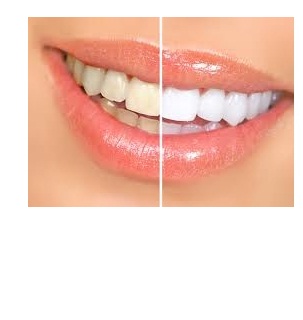
Dental bleaching, also known as tooth whitening, is a common procedure in general dentistry but most especially in the field of cosmetic dentistry. A child's deciduous teeth are generally whiter than the adult teeth that follow. As a person ages the adult teeth often become darker due to changes in the mineral structure of the tooth, as the enamel becomes less porous. Teeth can also become stained by bacterial pigments, foodstuffs and tobacco. Certain antibiotic medications (like tetracycline) can also lead to teeth stains or a reduction in the brilliance of the enamel.
There are many methods to whiten teeth: bleaching strips, bleaching pen, bleaching gel, and natural bleaching. Oxidizing agents such as hydrogen peroxide or carbamide peroxide are used to lighten the shade of the tooth. The oxidizing agent penetrates the porosities in the rod-like crystal structure of enamel and oxidizes interprismatic stain deposits; over a period of time, the dentin layer, lying underneath the enamel, is also bleached. Power bleaching uses light energy to accelerate the process of bleaching in a dental surgery. The effects of bleaching can last for several months, but may vary depending on the lifestyle of the patient. Factors which will decrease whitening include smoking and the ingestion of dark colored liquids like coffee, tea and red wine.



 How to Reach Us
How to Reach Us  Photo Gallery
Photo Gallery 